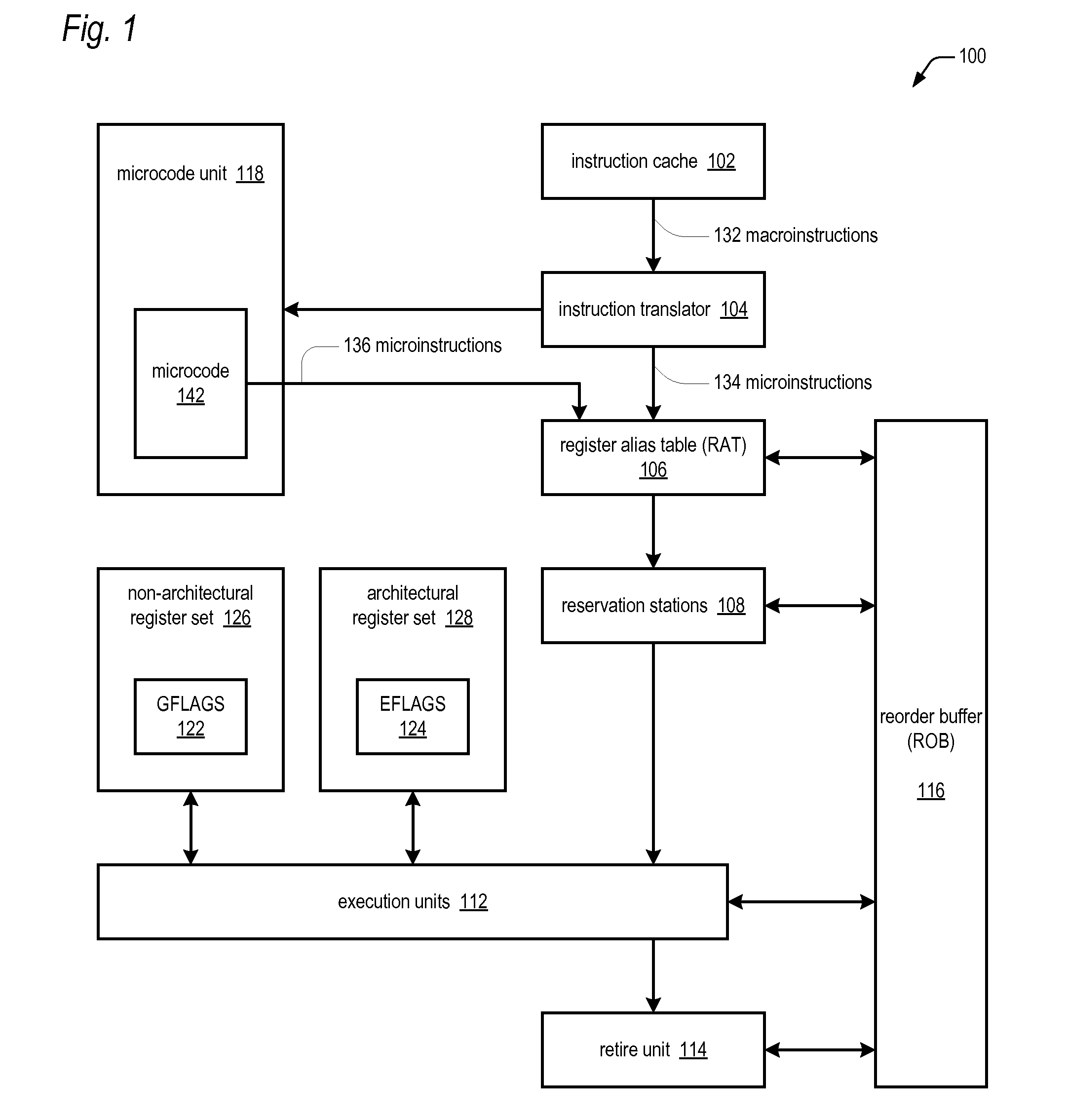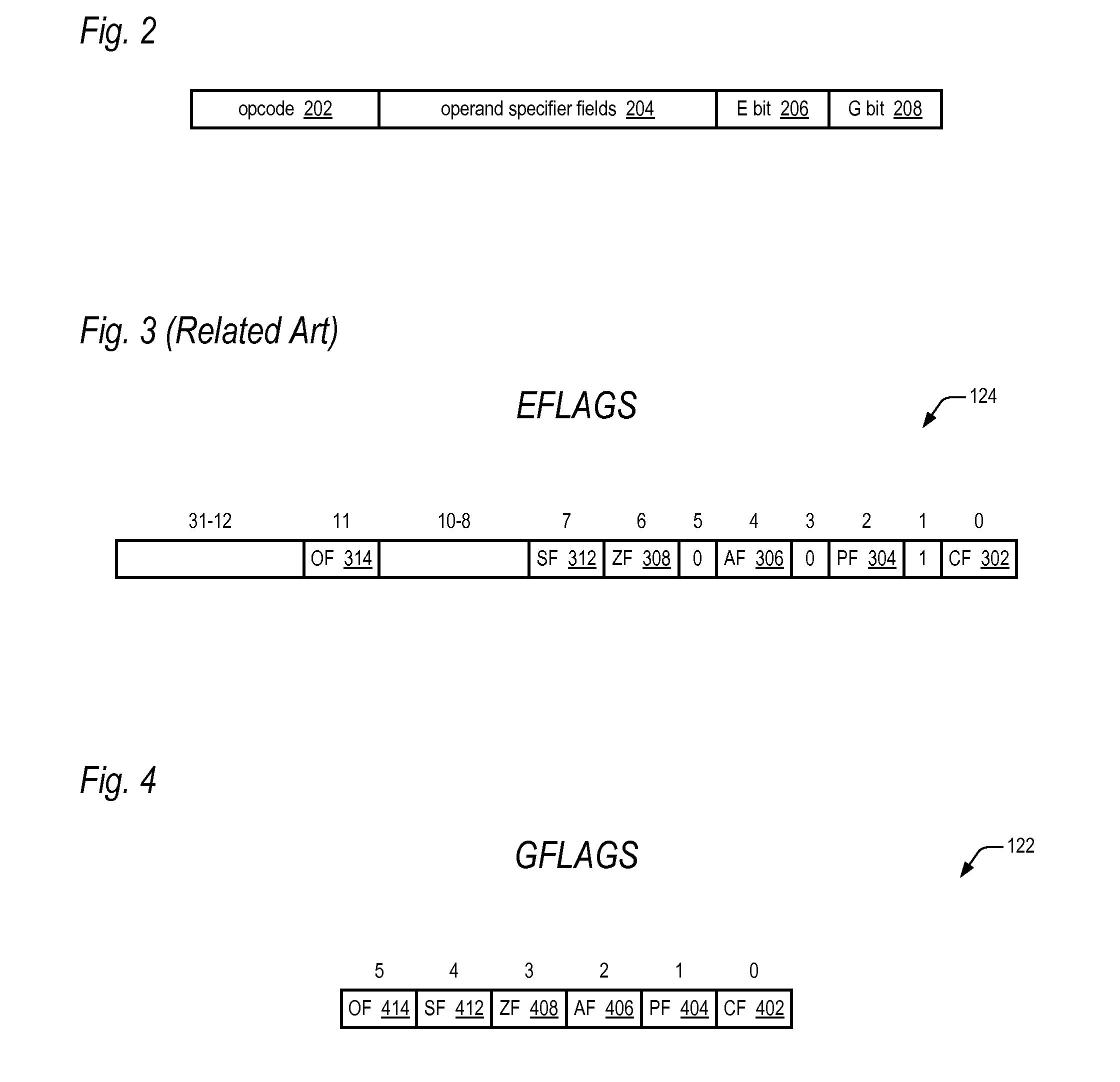Microprocessor with microinstruction-specifiable non-architectural condition code flag register
a microprocessor and condition code flag technology, applied in the direction of instruments, program control, computation using denominational number representation, etc., can solve the problems that the architecture cannot update the condition code flag register, the instruction set of the architecture is very complex and may be variable length, and the handler is not allowed by the architecture to update the condition code flags. , to achieve the effect of minor impact on the instruction forma
- Summary
- Abstract
- Description
- Claims
- Application Information
AI Technical Summary
Benefits of technology
Problems solved by technology
Method used
Image
Examples
Embodiment Construction
[0018]In one embodiment, the present invention adds a new register, the GFLAGS register (122 of FIG. 1), to the microarchitecture which includes the same condition code flags (402 through 414 of FIG. 4) as the EFLAGS register (124 of FIG. 1), but that is not architecturally visible; rather, it is only visible to the microarchitecture instruction set. Additionally, the present invention adds a bit, the G bit (208 of FIG. 2), to the microinstruction format that specifies to write or read the GFLAGS register 122 rather than the EFLAGS register 124. This enables the instructions of the instruction set to use the contents of the registers of the processor (126 and 128 of FIG. 1) as input operands and see what the results would have been on the EFLAGS register 124 without actually updating the EFLAGS register 124. For example, a conditional branch (Jcc) and a conditional move (MOVcc) can be conditioned off of GFLAGS 122, rather than EFLAGS 124. For another example, an instruction that gen...
PUM
 Login to View More
Login to View More Abstract
Description
Claims
Application Information
 Login to View More
Login to View More - R&D
- Intellectual Property
- Life Sciences
- Materials
- Tech Scout
- Unparalleled Data Quality
- Higher Quality Content
- 60% Fewer Hallucinations
Browse by: Latest US Patents, China's latest patents, Technical Efficacy Thesaurus, Application Domain, Technology Topic, Popular Technical Reports.
© 2025 PatSnap. All rights reserved.Legal|Privacy policy|Modern Slavery Act Transparency Statement|Sitemap|About US| Contact US: help@patsnap.com



